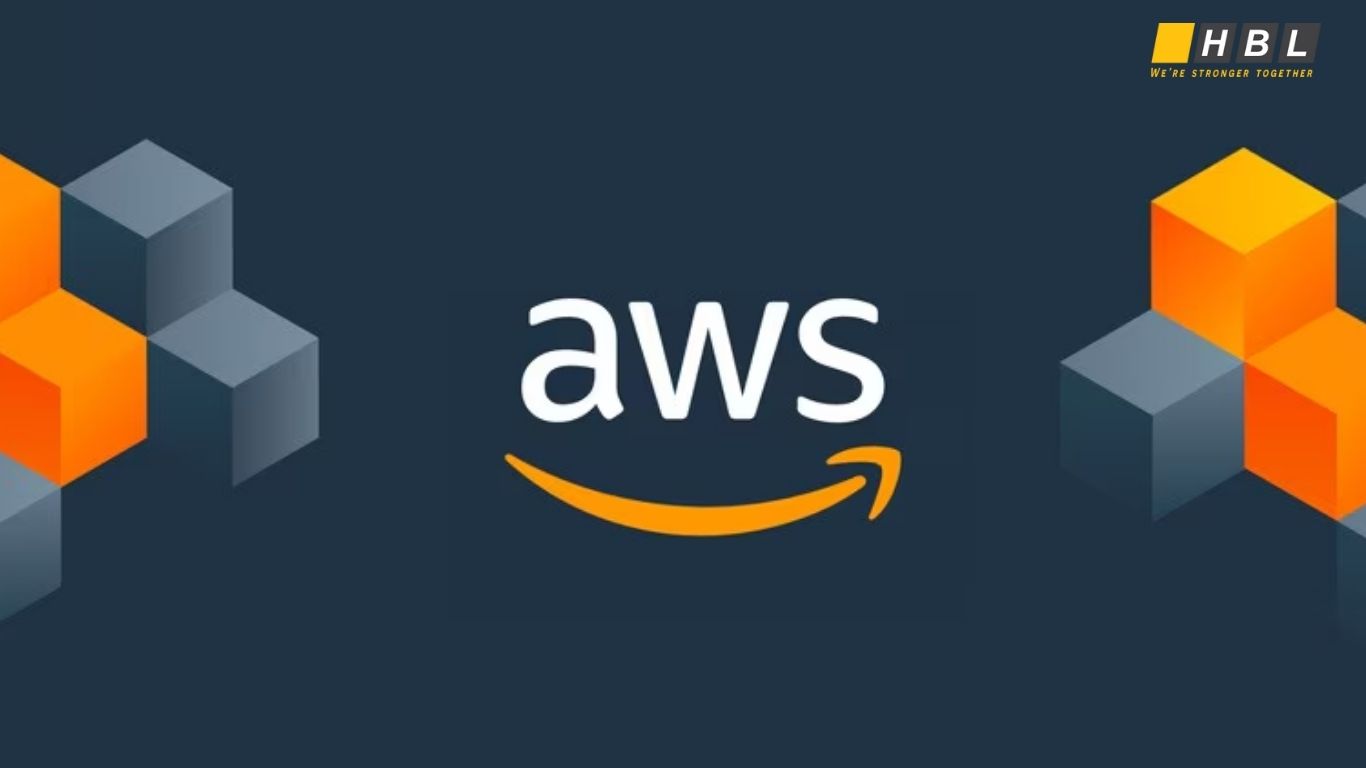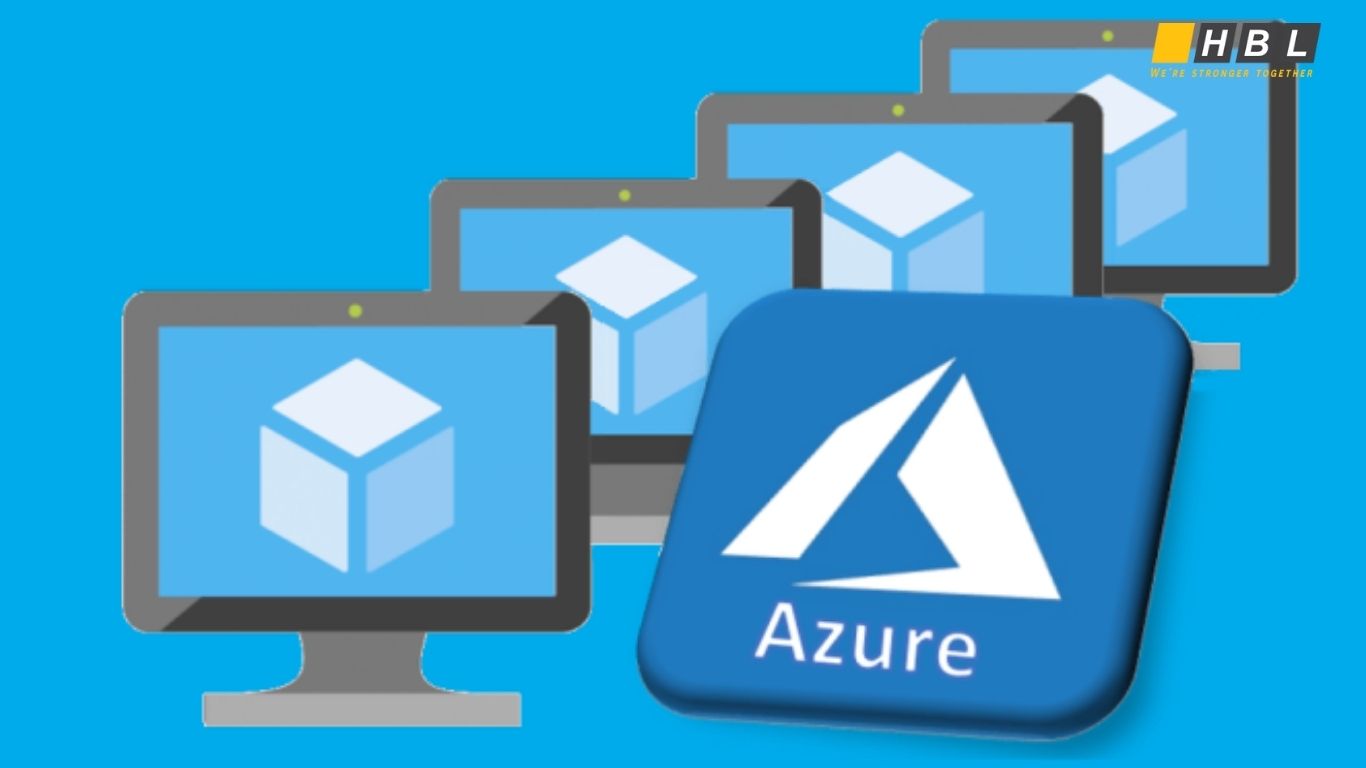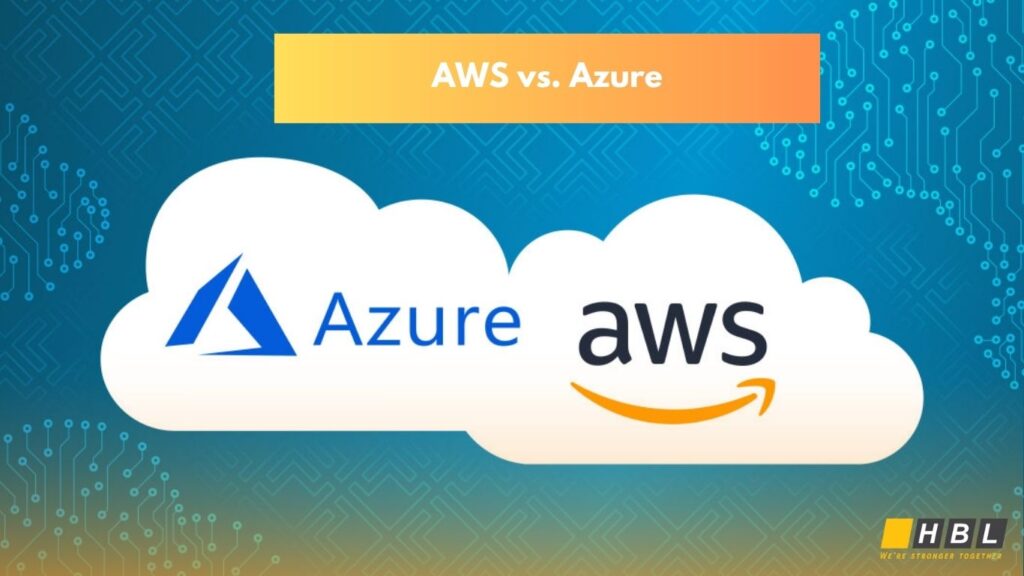Cloud computing has become a fundamental part of digital transformation in 2025. Businesses of all sizes rely on cloud platforms to improve flexibility, reduce operational costs, and scale faster than ever before. Among the many available providers, Amazon Web Services (AWS) and Microsoft Azure continue to lead the market — each offering powerful tools and infrastructure to support modern workloads. In this guide, we’ll take a closer look at AWS vs Azure, examining their strengths, differences, and how they stack up across key categories.
1.1. What is AWS?
Amazon Web Services, commonly known as AWS, is Amazon’s cloud platform that launched in the mid-2000s. It offers an extensive catalog of services, ranging from computing and storage to machine learning, IoT, and serverless technology. AWS is well known for its maturity, global data center footprint, and strong track record in uptime and performance. It remains a go-to choice for companies looking for a highly customizable and enterprise-ready cloud solution.

1.2. What is Azure?
Microsoft Azure is Microsoft’s answer to the growing demand for cloud services, introduced a few years after AWS. It provides a wide array of tools designed for app development, data analytics, machine learning, and hybrid cloud environments. One of Azure’s major advantages is its deep integration with Microsoft’s software ecosystem — making it an attractive option for organizations already using tools like Windows Server, SQL Server, and Microsoft 365.

1.3. The growing importance of cloud computing in 2025.
As we move deeper into the digital era, cloud computing is more vital than ever. The demand for scalable infrastructure, remote accessibility, data security, and faster time-to-market has driven rapid cloud adoption across every sector. In 2025, it’s not just about shifting to the cloud — it’s about choosing the right partner to support your long-term goals. That’s why comparing platforms like AWS and Azure is more than a technical decision; it’s a strategic one.
2. AWS and Azure: Market Share and Popularity
Understanding the reach and influence of cloud providers helps businesses make informed decisions. In 2025, both AWS and Azure remain at the forefront of the cloud industry, each serving millions of users and enterprises across the globe. While AWS continues to lead in overall market share, Azure is quickly gaining ground — especially in sectors already integrated with Microsoft’s ecosystem.
2.1. Current market share comparison
As of early 2025, Amazon Web Services (AWS) holds approximately 29% of the global cloud infrastructure market. This leadership position is backed by its long-standing presence, broad service offerings, and extensive global data center network. Meanwhile, Microsoft Azure claims around 22% of the market, continuing a steady upward trend over the past few years.
Azure’s growth is partly attributed to Microsoft’s enterprise relationships, making it a natural choice for companies already using products like Microsoft 365, Dynamics, and Windows Server. While AWS has the advantage of being first to market, Azure is closing the gap through aggressive expansion and deeper vertical integration.
2.2. Adoption across industries
Both AWS and Azure are widely adopted across various industries, but certain sectors show a clear preference for one over the other based on specific use cases and legacy systems.
AWS is particularly strong in industries that demand high levels of scalability and innovation, such as:
-
- Technology and Software Development
- E-commerce and Retail
- Media & Entertainment
- Startups and DevOps-heavy teams
- Technology and Software Development
Azure tends to dominate in sectors where Microsoft software is already heavily embedded, including:
-
- Financial Services
- Healthcare
- Government Agencies
- Education and Public Sector Organizations
- Financial Services
Azure’s appeal also extends to organizations with hybrid infrastructure needs, as its tools are designed to integrate seamlessly with on-premise environments — a key advantage for enterprises in regulated industries.
2.3. Notable customers of each platform
The client portfolios of AWS and Azure include some of the largest and most recognizable global brands, reflecting the trust each platform has earned over time.
Notable AWS customers include:
- Netflix – leveraging AWS for global content delivery and scalability.
- Airbnb – using AWS to support its global travel platform.
- Samsung – relying on AWS for cloud-based innovation.
- Spotify – streaming services hosted on AWS infrastructure.
Notable Azure customers include:
- Adobe – uses Azure for digital media and marketing solutions.
- LinkedIn – fully integrated with Microsoft Azure since Microsoft’s acquisition.
- Coca-Cola – migrated critical workloads to Azure for improved efficiency.
- General Electric (GE) – runs industrial cloud applications on Azure.
These partnerships highlight how each platform is positioned to meet a variety of business needs, from content streaming to industrial IoT and global enterprise workloads.
3. AWS and Azure: Core Service Offerings
When comparing AWS vs Azure, one of the most important areas to evaluate is their range of services. Both platforms offer extensive capabilities designed to support everything from small applications to enterprise-scale systems. While their services may appear similar on the surface, each provider has unique features, pricing models, and integration options that can influence which one is the better fit for a given use case.

3.1. Computing Services
At the heart of cloud computing is the ability to run applications on virtual machines (VMs) and containers.
- AWS provides Elastic Compute Cloud (EC2), a flexible service that allows users to configure virtual servers with custom CPU, memory, storage, and networking capacities. EC2 supports various pricing options, including On-Demand, Reserved Instances, and Spot Instances, offering cost control and scalability.
- Azure offers similar capabilities through its Azure Virtual Machines, which are tightly integrated with the rest of Microsoft’s ecosystem. Azure also supports multiple VM series optimized for tasks like general-purpose computing, memory-intensive workloads, and GPU-based processing.
Both platforms also support serverless computing — AWS with Lambda, and Azure with Functions — which allows developers to run code without provisioning or managing servers.
3.2. Storage Solutions
Having storage that is both reliable and capable of scaling is vital for any cloud environment.
- Amazon S3 (Simple Storage Service) is one of AWS’s flagship services, offering object storage with high durability, lifecycle policies, and multiple storage classes (e.g., Standard, Intelligent-Tiering, Glacier for archiving).
- Azure Blob Storage is Microsoft’s counterpart, providing similar object storage capabilities with tight integration into services like Azure Data Lake and Azure Backup.
For file and block storage, AWS offers EFS (Elastic File System) and EBS (Elastic Block Store), while Azure counters with Azure Files and Azure Disk Storage. Both providers offer options for high-performance SSD storage, backup, and encryption at rest.
3.3. Database Services
Both cloud providers offer a wide range of database options, including relational, NoSQL, and more.
- AWS offers Amazon RDS for managed relational databases (supporting MySQL, PostgreSQL, Oracle, and SQL Server), as well as DynamoDB, a fully managed NoSQL database known for its speed and scalability.
- Azure provides Azure SQL Database, a fully managed relational service based on Microsoft SQL Server, and Cosmos DB, a globally distributed NoSQL database ideal for modern web and mobile apps.
Additionally, both providers support database migration tools and hybrid integration, helping businesses modernize legacy systems with minimal disruption.
3.4. Networking and Content Delivery
Robust networking and fast content delivery are critical to cloud performance.
- AWS features Virtual Private Cloud (VPC) for creating isolated networks, along with Elastic Load Balancing and Amazon CloudFront, its content delivery network (CDN) that reduces latency for users across the globe.
- Azure offers Virtual Network (VNet) as its core networking component, along with Azure Load Balancer and Azure Front Door for global web application acceleration and traffic routing.
Both platforms also support private connectivity to on-premises data centers through AWS Direct Connect and Azure ExpressRoute.
3.5. AI and Learning Capabilities
Artificial intelligence and machine learning are becoming essential for data-driven innovation.
- AWS delivers a full suite of AI/ML tools through Amazon SageMaker, which allows users to build, train, and deploy machine learning models quickly. AWS also includes services for image recognition, natural language processing, and predictive analytics.
- Azure offers Azure Machine Learning, a comprehensive platform for model development and deployment, plus a range of pre-built AI services like Azure Cognitive Services, which supports speech recognition, translation, and computer vision.
For businesses aiming to embed AI into their applications without a steep learning curve, both providers offer powerful low-code and no-code tools.
4. AWS and Azure: How to Choose the Right Platform?
Selecting the right cloud platform is a crucial decision that can impact your organization’s agility, costs, and growth. While both AWS and Azure offer powerful services, the best choice depends on your specific needs, existing technology stack, and future goals. This section highlights key factors to consider when deciding between AWS and Azure, followed by answers to common questions.
4.1 Key Factors to Choose AWS or Azure
- Existing Technology Ecosystem
If your organization already uses Microsoft products like Windows Server, Office 365, or SQL Server, Azure often provides smoother integration and management. AWS, on the other hand, is technology-agnostic and offers broad compatibility across various operating systems and software. - Service Breadth and Innovation
AWS has a longer history in the cloud market, leading to a wider variety of services and mature features. If you require cutting-edge tools in AI, machine learning, or serverless computing, AWS might have a slight edge. Azure is quickly advancing and narrowing the lead, particularly in hybrid cloud and artificial intelligence features. - Pricing and Cost Management
Both platforms use pay-as-you-go pricing, but the specifics can vary widely depending on your usage patterns. Azure’s pricing can be more attractive if you already have Microsoft licenses due to discounts. It’s important to use pricing calculators and run pilot tests to estimate costs accurately. - Global Reach and Compliance
Consider your geographical needs and regulatory requirements. AWS has the largest global infrastructure footprint, but Azure offers strong hybrid cloud solutions and compliance certifications, which may be beneficial for government and highly regulated industries. - Support and Training
Assess the level of support you need and your team’s familiarity with each platform. Microsoft offers comprehensive training paths for Azure, especially valuable if your staff are already experienced with Microsoft technologies. AWS also provides extensive documentation and certifications widely recognized in the industry.
Frequently Asked Questions (FAQs)
Q1: Can I use both AWS and Azure together?
Yes. Many organizations adopt a multi-cloud strategy to leverage the strengths of both platforms, increase redundancy, and avoid vendor lock-in.
Q2: Which platform is more cost-effective?
Cost-effectiveness depends on your specific workloads and usage. Both AWS and Azure offer pricing calculators to estimate expenses. Efficient cost management usually involves managing resources wisely and selecting the appropriate pricing plan.
Q3: Is one platform easier to learn than the other?
Azure is generally considered more intuitive for users familiar with Microsoft products, while AWS has a steeper learning curve but offers extensive resources and community support.
Q4: Which platform offers better hybrid cloud solutions?
Azure has a strong focus on hybrid cloud through services like Azure Stack, making it ideal for businesses combining on-premises and cloud infrastructure. AWS also offers hybrid options but Azure is often preferred in this space.
Q5: Are both platforms equally secure?
Both AWS and Azure invest heavily in security, offering advanced features like encryption, identity and access management, and compliance certifications. Security also depends on how well you configure and manage your cloud environment.
Read more:
Most Common Programs for App Development
Staff Augmentation – The Future of Agile and On-Demand Talent Solutions




